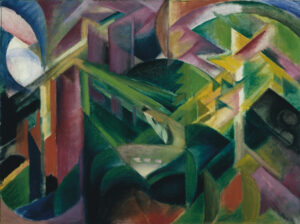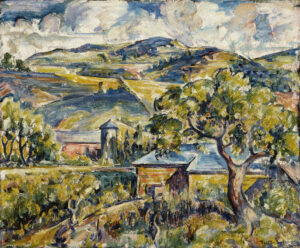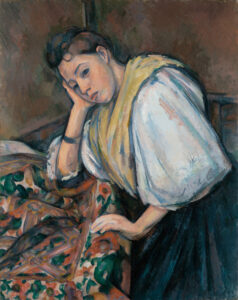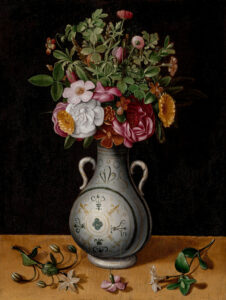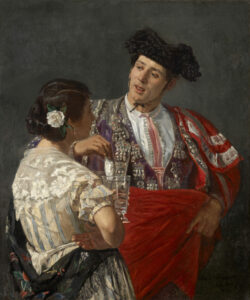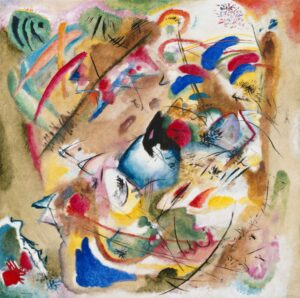
Born on January 23, 1832, in Paris to a privileged bourgeois family, Édouard Manet was the son of Auguste Manet, a high-ranking official in the Ministry of Justice, and Eugénie Désirée Fournier, daughter of a diplomat. His maternal uncle, Captain Édouard Fournier, introduced him to art at an early age, taking him to visit the Louvre galleries, particularly the Spanish collection.
Édouard Manet’s Biography : Early Life and Influences
After an unremarkable education at Collège Rollin and two failed attempts at the Naval Academy entrance examination, Manet embarked in 1848 as a pilot’s apprentice on a training ship bound for Rio de Janeiro. During this voyage, he produced numerous drawings and contracted syphilis—an illness that would plague him throughout his life and ultimately lead to his premature death.
In 1850, Manet entered the studio of academic painter Thomas Couture, where he remained for approximately six years. Refusing to enroll at the École des Beaux-Arts, he quickly lost faith in his master’s teachings and began to develop his own contrary approach. He supplemented his training with travels across Europe (Holland, Italy, Germany) and by copying works of great masters at the Louvre—Tintoretto, Titian, Rubens, and particularly Delacroix, whose The Barque of Dante he greatly admired.
Spanish influence was paramount in Manet’s early works, especially that of Velázquez, whom he considered “the painter of painters.” Even before his first journey to Spain in 1865, he dedicated several paintings to “Spanish subjects”: The Absinthe Drinker (1858-1859), The Spanish Singer (1860), and Lola de Valence (1862). Goya’s influence is also evident in his bullfighting scenes and in The Execution of Maximilian (1867).
Entry into Parisian Society and Controversies
During the 1860s, Manet established himself as a figure of Parisian “elegant bohemia.” Impeccably dressed, he frequented fashionable cafés such as Tortoni, the Tuileries Gardens, and surrounded himself with a circle of artists and writers. Music in the Tuileries Gardens (1862) illustrates this sophisticated world and portrays his associates: Baudelaire, Théophile Gautier, Fantin-Latour, and his brother Eugène.
The pivotal moment in his career came in 1863 when he exhibited three controversial works at the Salon des Refusés, including Le Déjeuner sur l’herbe (initially titled The Bath). This painting, inspired by Titian’s Concert Champêtre, provoked scandal through its depiction of a nude woman surrounded by clothed men in a contemporary setting, eliminating any mythological interpretation.
Two years later, Olympia (1863), portraying a reclining courtesan, ignited an even fiercer controversy. Although this nude was inspired by Titian’s Venus of Urbino, it was the uncompromising treatment of the subject and the defiant gaze of the model, Victorine Meurent, that shocked the public and critics. Émile Zola defended the painter, beginning a friendship that would last for several years.
The Diverse Body of Work
Despite the scandals, Manet pursued his work with remarkable diversity in subjects, genres, and techniques.
Portraits
Portraits, particularly of women, constitute a significant portion of his oeuvre. Victorine Meurent, his favorite model for twelve years, appears in several major paintings: The Street Singer (1862), Mlle V. in the Costume of an Espada (1862), Le Déjeuner sur l’herbe (1863), Olympia (1863), and The Railway (1872-1873).
His companion Suzanne Leenhoff, a piano teacher whom he married in 1863 after his father’s death, and their son Léon feature in numerous works, notably The Reading (c. 1865). Manet painted several portraits of Berthe Morisot, who would become his sister-in-law in 1874 when she married his brother Eugène: The Balcony (1868-1869), Berthe Morisot with a Bouquet of Violets (1872), and Berthe Morisot with a Fan (1874).
His literary friendships are reflected in portraits of writers: Charles Baudelaire, Émile Zola (Portrait of Émile Zola, 1868), and Stéphane Mallarmé (Portrait of Stéphane Mallarmé, 1876), with whom he collaborated artistically.
Historical Paintings
Though marginal within his oeuvre, Manet addressed certain contemporary historical events. The Battle of the Kearsarge and the Alabama (1864) immortalizes a naval battle from the American Civil War. The Execution of Maximilian (1867-1868), inspired by Goya’s The Third of May 1808, depicts the execution of the Emperor of Mexico abandoned by Napoleon III.
A committed republican, Manet joined the National Guard during the Franco-Prussian War of 1870. After the Paris Commune, he expressed his horror at the repression through two lithographs: The Barricade and Civil War (1871-1873). Later, he painted The Escape of Rochefort (1881) and created a portrait of the journalist Henri Rochefort (1881).
Seascapes and Marine Subjects
From 1868, Manet’s summer sojourns in Boulogne-sur-Mer inspired numerous marine paintings. Moonlight over the Port of Boulogne (1869) portrays the nocturnal return of a fishing boat. The Departure of the Folkestone Steamer (1869) plays with light and color. The Jetty at Boulogne was the subject of several paintings.
Cafés and Places of Leisure
Cafés, brasseries, and café-concerts—centers of Parisian artistic life—became recurring themes after 1878. At the Café (1878), The Plum (1878), Corner of a Café-Concert (1878-1879), The Beer Waitress (1878-1879), and At Père Lathuille’s (1879) all capture modern life.
His final major work, A Bar at the Folies-Bergère (1881-1882), depicts a barmaid named Suzon before a mirror that reflects a shifted image of the scene, an effect that surprised and fascinated critics.
Still Lifes
“A painter can say everything with fruits or flowers, or simply clouds,” Manet declared. His autonomous still lifes include floral compositions (White Peonies, 1864; Lilac Bouquet, 1883), fish and seafood (Salmon and Shrimp, 1864), fruits (Melon and Peaches, 1866; Two Pears, 1864), and vegetables, such as A Bundle of Asparagus (1880).
Prints and Illustrations
Between 1860 and 1882, Manet created nearly one hundred prints (etchings, lithographs, and woodcuts), often revisiting subjects from his paintings. He collaborated with Stéphane Mallarmé to illustrate Edgar Allan Poe’s The Raven (1875) and The Afternoon of a Faun (1876).
Relationship with Impressionism
Although connected to the Impressionist movement and mistakenly considered one of its founding fathers, Manet distinguished himself through his technique—concerned with reality—that did not employ the new approaches to color and the particular treatment of light characteristic of this movement. Nevertheless, he shared certain recurring themes with the Impressionists: portraits, seascapes, Parisian life, and still lifes.
After the Franco-Prussian War of 1870, he supported the Impressionists, among whom he counted close friends such as Claude Monet, Auguste Renoir, and Berthe Morisot. Under their influence, he partially abandoned studio painting for plein air work in Argenteuil and Gennevilliers, and his palette brightened, as evidenced in Argenteuil (1874). Yet he maintained his personal approach characterized by careful composition and a concern for reality.
Manet declined to participate in the Impressionist exhibitions, continuing to submit his works to the official Salon, seeking institutional recognition that would come only late in his life.
Final Years and Legacy
Weakened by the syphilis contracted in Rio de Janeiro, Manet suffered increasingly from 1876 onward. In his final years, he stayed in Bellevue for treatments and painted small-format works while seated, particularly still lifes of fruits and flowers, as well as pastel portraits, a less taxing technique.
In 1881, he received an award at the Salon and was decorated with the Legion of Honor by his friend Antonin Proust, who had become Minister of Fine Arts. The ceremony took place on January 1, 1882.
Manet died on April 30, 1883, at the age of 51, from locomotor ataxia and gangrene that had necessitated the amputation of his left foot. He was buried in Passy Cemetery in Paris, where an epitaph engraved by Félix Bracquemond in 1890, “Manet et manebit” (“He remains and will remain”), summarizes the general sentiment of the art world after his passing.
The master left more than 400 paintings and countless pastels, sketches, and watercolors that constitute a major pictorial body of work with considerable influence. Derided, insulted, and ridiculed during his lifetime, Manet is now internationally recognized as one of the most important precursors of modern painting. His major works can be viewed in the world’s greatest museums.
In 1907, 44 years after its creation, Olympia, initially rejected, entered the Louvre Museum (now housed at the Musée d’Orsay), finally consecrating the genius of an artist who, according to Degas, was “greater than we thought.”
Manet’s Enduring Impact
Neither strictly Impressionist nor Realist, Manet occupies a unique place in art history. His formal and thematic innovations paved the way for pictorial modernity. By questioning academic conventions, embracing contemporary life as subject matter, and exploring new technical possibilities, he profoundly transformed the art of his time.
His famous maxim “One must be of one’s time” perfectly encapsulates his approach: capturing the essence of modern life with honesty and originality, unconcerned with established conventions. This bold approach earned him the incomprehension of his contemporaries but laid the foundations for an artistic revolution whose legacy continues today.
Manet’s work raises fundamental questions about the nature of pictorial representation, the role of the artist in society, and the relationship between tradition and innovation. It embodies the pivotal moment when modern painting definitively freed itself from academic codes to explore new modes of expression while maintaining a fertile dialogue with the masters of the past.

